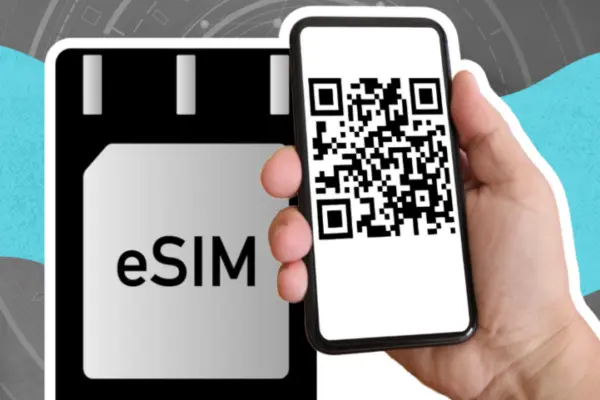eSIM on iPhone & Android: Activation, Compatibility, Troubleshooting (2025)
Learn eSIM activation on iPhone and Android: verify support, convert SIM, transfer lines, troubleshoot.
Advertising
What eSIM is and why it matters in 2025
An eSIM is an embedded chip that stores digital cellular profiles instead of a removable card.
You add, remove, and switch plans in software without opening a SIM tray.
This reduces downtime, improves security, and makes dual-line use simpler for work and travel.
Modern devices, tablets, and wearables increasingly support eSIM, including eSIM-only variants.
eSIM Activation: quick pre-flight checklist
Before you start, run through this list to avoid interruptions.
- Confirm eSIM support on your exact model and software version.
- Ensure the phone is carrier-unlocked or eligible for your target network.
- Update the operating system and carrier settings to the latest versions.
- Connect to reliable Wi-Fi and charge the battery above thirty percent.
- Have account credentials, activation code, or QR code ready.
- Back up important data and confirm access to two-factor methods.
- Plan a low-risk time window if migrating your main number.

eSIM compatible phones: how to verify quickly
You can confirm support in minutes by checking two signs in settings.
- Presence of an EID number in device information.
- An option to Add eSIM or Add mobile plan in cellular settings.
Device behavior can vary by region and edition, including dual eSIM, eSIM plus physical SIM, or eSIM-only.
If you intend to run two lines simultaneously, verify dual SIM capabilities on your exact model.
How esim activation works on iPhone
Apple provides multiple activation paths to match different carrier capabilities.
Method 1 — Activate with a QR code
- Open Settings and choose Add eSIM or Set up Cellular.
- Select Use QR code and scan the carrier code.
- Wait for downloading and installation to complete.
- Label the line and select defaults for data, calls, and messages.
- Place a test call and send an SMS to finalize provisioning.
Method 2 — Carrier Activation or assigned plan
- Some carriers preassign a plan to your device based on EID.
- A notification prompts you to install the plan; follow on-screen steps.
- If you do not see a prompt, check Cellular settings for pending plans.
- Restart if network registration does not complete within a few minutes.
Method 3 — Quick Transfer from an existing iPhone
- Keep both iPhones nearby with screens unlocked and Wi-Fi on.
- On the new iPhone, choose Transfer from nearby iPhone in Cellular settings.
- Approve the transfer on the old device and wait for activation.
- After calls and data work, remove or disable the old profile.
- Recheck services tied to your number such as iMessage and FaceTime.
Method 4 — Manual entry with SM-DP+ and activation code
- Select manual entry when provided with a server address and code.
- Type the SM-DP+ address and activation code exactly as given.
- Install the profile, then assign labels and defaults.
How esim activation works on Android
Menus vary across brands, but the flow is similar on modern Android versions.
Samsung Galaxy flow
- Go to Settings → Connections → SIM Manager or Mobile Network.
- Tap Add mobile plan and choose Scan QR code or Enter activation code.
- Complete required fields and proceed to installation.
- Select defaults for data, calls, and messages; restart if needed.
Google Pixel flow
- Open Settings → Network and Internet → SIMs.
- Tap Add eSIM and follow prompts to scan, fetch, or install an assigned plan.
- On supported models, use Convert to eSIM for on-device migration.
- After conversion, the physical SIM is deactivated.
Carrier app flow
- Sign in to your carrier app on the device that will host the plan.
- Choose Activate or Add eSIM and accept the install permission.
- Wait for the profile to download and verify signal and data.
Convert physical SIM to eSIM: keep your number, lose the plastic
On-device conversion is the fastest way to modernize your main line without store visits.
- Confirm that your device and carrier support same-device conversion.
- On iPhone, locate the conversion option inside Cellular settings.
- On compatible Pixel models, open SIM management and select Convert to eSIM.
- Test voice, SMS, voicemail, and data after conversion.
- Keep the plastic card securely until you confirm full stability.
Transfer eSIM to a new phone: the three common paths
Your migration path depends on platforms and carrier features.
- iPhone to iPhone: Use Quick Transfer with both devices nearby and unlocked.
- Android to Android: Use a Transfer SIM step during setup or in SIM settings.
- Cross-platform: Request a reissued eSIM profile, install on the new device, and then disable the old one.
- Reverify apps that bind to your number such as iMessage, FaceTime, RCS, and WhatsApp.
- Update two-factor authentication numbers on key accounts.
Dual SIM with eSIM: work and personal on one device
Dual SIM is a productivity booster when configured with intention.
- Label lines clearly as Personal and Work.
- Choose a default line for mobile data to control costs.
- Set per-contact defaults for the line used to call or message.
- On trips, set the local eSIM for data and disable roaming on your home line.
- Review call forwarding and voicemail after any change.
Travel with eSIM: smoother arrivals and fewer surprises
eSIM shines for international trips and cross-border work.
- Install the travel eSIM before departure so it is ready on landing.
- Set the travel plan as the data line and keep your home number for calls and texts.
- Disable data roaming on the home line to avoid accidental charges.
- Confirm supported network bands and coverage at your destination.
- Use data saver features and offline maps to stretch your allowance.
- Remove expired profiles after the trip to keep your SIM list clean.
Troubleshooting common eSIM activation issues
Most activation pain points respond to a structured checklist.
- No Service after installation: Toggle Airplane mode for a full minute and wait for network registration.
- Plan shows Inactive or Waiting: Connect to stable Wi-Fi, disable VPN, and retry installation.
- Calls work but data does not: Set the correct default data line and check APN fields.
- QR code fails repeatedly: Increase screen brightness, avoid glare, or use manual SM-DP+ entry.
- Profile not supported or cannot be added: Verify device unlock status and request a profile tied to the correct EID.
- Activation stuck on downloading: Restart the device, close settings, and attempt a fresh installation.
- Messages tied to the old number: Re-enable number-bound services and confirm the registered line.
- Two-factor codes not arriving: Update your number in account security pages and confirm SMS permissions.
- Signal appears but calls drop: Turn off battery savers temporarily and test in an open area.
- Data is slow post-activation: Confirm plan status and APN, then consider a network settings reset as a last resort.
Security, privacy, and resilience best practices
Treat your eSIM like a sensitive credential.
- Use a strong passcode and enable biometric unlock.
- Turn on device-finding features for remote lock and wipe.
- Avoid storing activation QR codes in shared or unsecured folders.
- Prefer password managers or encrypted notes for activation details.
- Enable SIM-change alerts where available.
- Remove old profiles when you sell, donate, or recycle a device.
- Keep a secondary contact method available during migrations.
- Document your steps so future upgrades are fast and repeatable.
Optimization tips for better daily use
Small tweaks make dual lines and roaming effortless.
- Assign different ringtones or vibrations per line.
- Use contact-level defaults to auto-select the right line.
- Restrict background data on the line you want to save.
- Pin SIM management to quick settings for faster switches.
- Schedule a monthly five-minute SIM health check.
- Keep a spare travel eSIM profile ready for emergencies.
Checklist for esim activation and maintenance
Use this condensed list to run the process end-to-end.
- Confirm eSIM support, EID presence, and unlock status.
- Update system and carrier settings to current versions.
- Prepare stable Wi-Fi, sufficient battery, and activation credentials.
- Choose your activation method: QR code, carrier assignment, carrier app, manual entry, or device-to-device transfer.
- Label lines and set defaults for data, calls, and messages.
- Place a test call, send an SMS, and open a webpage to verify functionality.
- Rebind services like iMessage, FaceTime, RCS, and WhatsApp.
- Store QR codes and activation details securely, then delete extra copies.
- Deactivate old profiles to prevent confusion.
- Document your steps for faster upgrades next time.
FAQs: eSIM compatible phones, transfer eSIM, convert physical SIM to eSIM, dual SIM
Do all new phones include eSIM in 2025?
Many do, but specifics vary by model, software, and market region.
How do I check if my device is one of the eSIM compatible phones?
Look for an EID and an Add eSIM option in network or cellular settings.
Can I convert physical SIM to eSIM without changing my number?
Yes, when your device and carrier support same-device conversion for that line.
What is the smoothest way to transfer eSIM to a new phone?
Use the platform’s guided transfer or request a fresh eSIM profile if switching platforms.
Will dual SIM let me run two plans at once?
On many modern phones, yes, though combinations and active limits differ by device.
Do I need the EID for activation?
Often yes, because it binds your eSIM profile to the correct device.
What if my QR code will not scan?
Increase brightness, avoid reflections, ensure the full code is visible, or enter details manually.
Can I keep multiple eSIM profiles installed?
Most devices let you store multiple profiles and toggle which one is active.
Is eSIM safer in theft scenarios?
It helps because there is no removable card and remote-lock tools are effective.
Should I erase my eSIM before selling my phone?
Yes, remove all profiles and perform a factory reset to protect your number and data.
Editorial note
The shift to eSIM makes connectivity simpler, faster, and more secure for everyday life, work, and travel.
With this structure, you can complete your esim activation, convert a physical SIM, transfer eSIM to a new phone, and configure dual SIM with clarity.
This article is independent and purely informational, with no affiliation to manufacturers, carriers, apps, or platforms mentioned.
Features, policies, and availability can change without notice; validate details in official sources before switching any plan.





